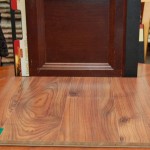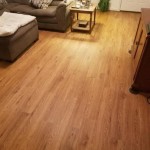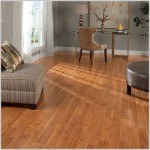Snap Lock Flooring: An Essential Guide for Durable and Stylish Interiors
Snap lock flooring is an innovative and highly sought-after flooring solution that offers numerous benefits for both residential and commercial spaces. This flooring system boasts an interlocking design that allows for easy and seamless installation, making it an excellent choice for DIY enthusiasts and professional contractors alike. In this guide, we will explore the essential aspects of snap lock flooring, including its types, advantages, and installation process.
Types of Snap Lock Flooring
Snap lock flooring is available in a wide range of materials, including:
- Vinyl: Vinyl snap lock flooring is highly durable, waterproof, and offers a variety of designs that mimic natural materials such as wood or stone.
- Laminate: Laminate snap lock flooring is scratch- and moisture-resistant, making it a suitable choice for high-traffic areas. It features a realistic wood-like appearance.
- Engineered Hardwood: Engineered hardwood snap lock flooring combines the beauty of natural wood with the durability of laminate, creating a robust and elegant flooring option.
Advantages of Snap Lock Flooring
Snap lock flooring offers several advantages over traditional flooring methods:
- Easy Installation: The interlocking mechanism of snap lock flooring allows for a quick and straightforward installation without the need for adhesives or specialized tools.
- Durability: Snap lock flooring is designed to withstand heavy foot traffic and is resistant to scratches and dents, making it ideal for busy homes or commercial spaces.
- Water Resistance: Vinyl snap lock flooring is 100% waterproof, while laminate and engineered hardwood snap lock flooring offer varying degrees of water resistance, making them suitable for areas prone to spills or moisture.
- Versatility: Snap lock flooring can be installed over various subfloors, including concrete, tile, and wood, providing design flexibility.
- Variety: Snap lock flooring is available in a wide selection of colors, textures, and finishes, allowing for customization to suit any décor.
Installation Process of Snap Lock Flooring
Installing snap lock flooring is a relatively straightforward process that can be completed in a few steps:
- Prepare the Subfloor: Ensure the subfloor is level, clean, and dry before beginning installation.
- Plan the Layout: Determine the starting point and layout of the flooring, accounting for any obstacles or features in the room.
- Install the First Row: Place the first plank on the subfloor, aligning it with the starting point and tapping it into place. Continue installing subsequent planks in the same manner.
- Install Subsequent Rows: Angle the next plank at the edge of the previous row and snap it into place along the length. Continue this process, alternating the starting edge of each row.
- Complete the Installation: Once the flooring is complete, trim any excess planks around the perimeter and install transition strips or moldings as necessary.
Snap lock flooring is an excellent choice for anyone seeking a durable, easy-to-install, and stylish flooring solution. With its versatility, variety of materials, and numerous advantages, snap lock flooring is sure to enhance the beauty and functionality of any space.

Lock Vinyl Plank Flooring A Comprehensive Guide Floorings

How To Install Lock Engineered Hardwood Flooring

8mm Anti Slip Snap Lock Wood And Stone Laminate Flooring China Waterproof German Technology Made In Com

Snap Together Hardwood Flooring Ultimate Guide And Benefits

In Flooring Systems Everything You Need To Know

Trade Show Flooring Centiva Snaplock Monster Displays

How To Lay Lvt Flooring A Step By Guide Factory Direct

Snaplock Floors World S Leading Portable Flooring Company Com

What Is Waterproof Fireproof Pvc Plastic Snap Lock Vinyl Flooring For Decoration

What Types Of Locking Systems Spc Flooring 3c China Rigid Core Luxury Vinyl Plank Pvc Sheeet Manufacturer
Related Posts








